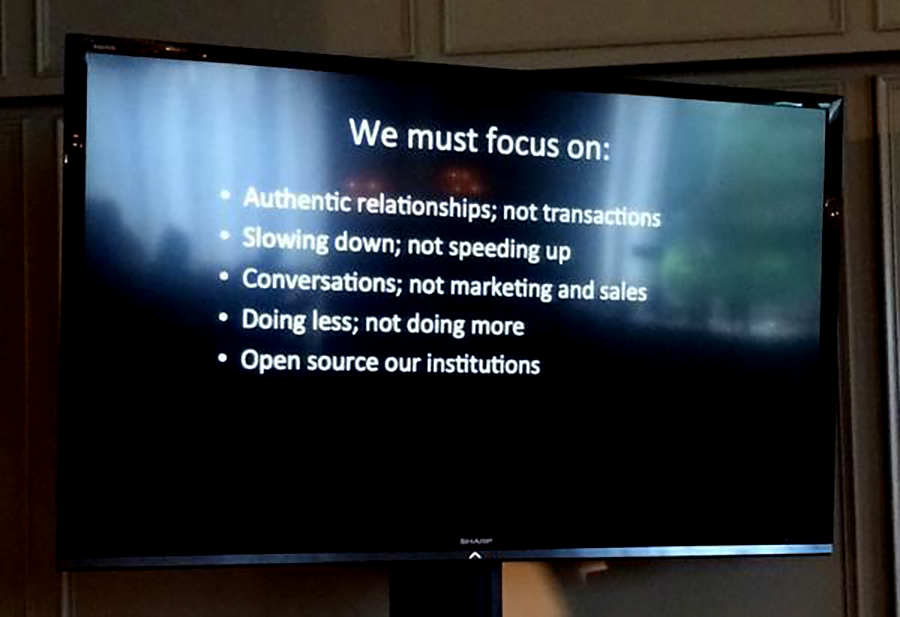Some ideas for #GIA2015

Steven Tepper's talk at GIA included this slide
I’m not certain but I think it has been 15 years since I attended a GIA conference. Much has changed since I was deeply involved in GIA, and for the better. The membership has grown in number and in the kinds of grantmakers who attend. In the early days there were very few public sector grantmakers, trustees, or smaller family foundations. The organization was a home base for staffed private, community, corporate, and family foundations, a place we could gather to share information and ideas. I’m sure fewer people felt like GIA was for them.
Compared to GIA’s early years, last week’s conference was more diverse demographically, and courageous in the difficulty of topics brought forward for discussion. The through-line of conversations about race, for example, was substantive and it is vital, challenging work to embrace. The question of whether grantmaking can do more harm than good also was raised. Bravo to GIA for broadening the discussion, involving more people, and creating urgency around deeds, not words, in addressing the field’s most deeply-rooted problems.
So why not take a few additional steps toward broadening the conversation even further? Here are five ideas for the 2015 conference that could open the dialogue to more people without changing the fundamental nature and purpose of what is essentially a private gathering.
- Invite artists not only to speak and present their work but also to attend the entire conference and participate as equals at all of the conference sessions. As GIA policies now stand, anyone who speaks at the conference who is not a grantmaker is not welcomed to stay beyond the day of their session. Why not invite a cohort of artist-instigators to fully participate in the conference? Each year’s conference could include a mix of artists from the host city and from elsewhere. This would enrich the conversation, and help overcome the lack of transparency that a closed conference represents.
- While on the subject of transparency, how about using SlideShare to share conference presentations broadly? And how about live-streaming keynotes and plenary sessions? This has an added plus in that it raises the bar for presenters who would know that their ideas and materials would have a life beyond the conference.
- The Twitter handle for the conference #GIA2014 was never announced from the podium. There were no signs with it displayed at conference sessions. Twitter handles were not included in the participants’ directory. To encourage broad sharing of ideas and issues facing arts grantmakers in real time, the field should be using Twitter or other social media platforms to share the conference with their networks. Afterwards, put social media documentation into Storify and share it widely.
- While I was live-tweeting a session, a grad student from American University responded (via Twitter) with the request that I ask GIA to open the conference to a group of grad students each year. What a great idea. Just think what an interesting experience it would be for them and think how much you would learn. Afterwards have a seminar with them to share impressions and discuss ideas raised through conference sessions.
- Since the membership is growing, take care that new people get to know long-time participants. At the start of every session, have the moderator ask everyone present to introduce themselves to someone they don’t know. When questions are asked from the audience to a panel or presenter, ask people to identify themselves. And create a buddy system for new members.
As a founding board member, it is heartening to see how far GIA has come. The organization is an ever more important resource for arts philanthropy. But the doors can be opened wider without the field suffering any damage. On the contrary, such an opening would model the very behaviors grantmakers are asking the cultural sector to embrace. For inspiration, remember the slide from Steven Tepper’s keynote talk:
“We must focus on:
- Authentic relationships, not transactions
- Slowing down not speeding up
- Conversations, not marketing and sales
- Doing less, not doing more
- Open source our institutions”
Good advice for arts organizations and their funders.
Thanks for including me in the 2014 conference!
